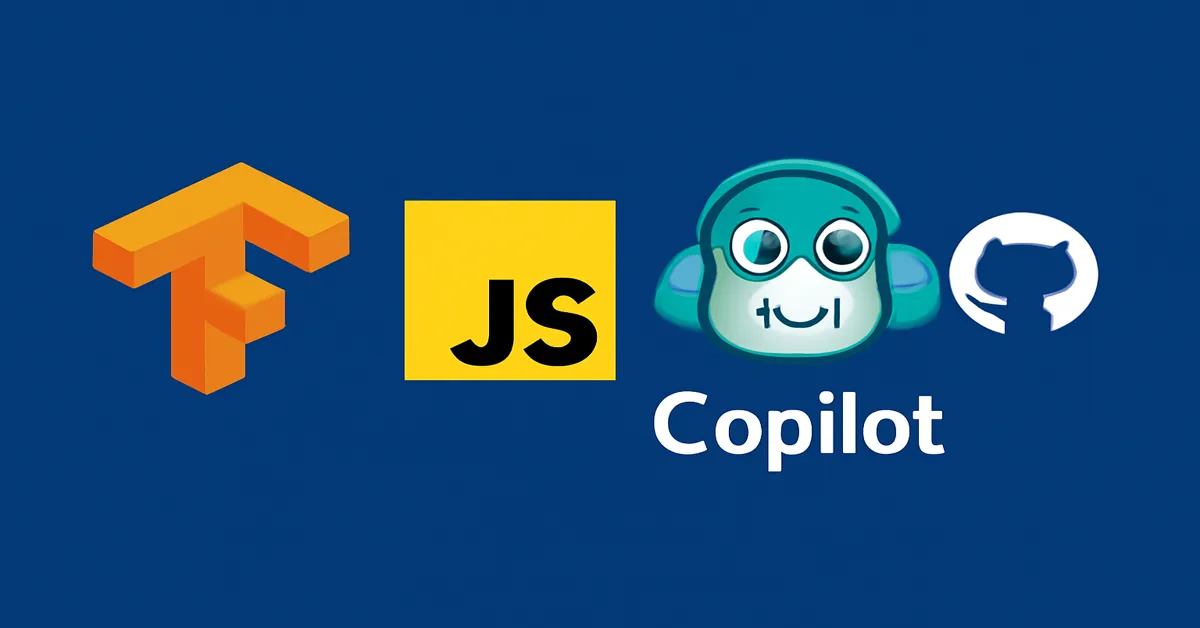The fusion of artificial intelligence (AI) with software development has ushered in a new era of innovation, transforming the way developers create applications and solve complex problems. Among programming languages, JavaScript—the ubiquitous language of the web—stands at the forefront of this revolution. By integrating AI directly into JavaScript development workflows, engineers are unlocking unprecedented capabilities: from building intelligent web applications to accelerating coding productivity – AI Integration.
This article provides an in-depth exploration of AI integration in JavaScript development, focusing on notable tools and technologies such as TensorFlow.js and GitHub Copilot. It outlines the current landscape, practical applications, challenges, and future trends. Whether you are a seasoned developer, a tech executive, or an AI enthusiast, this comprehensive analysis offers valuable insights into how AI is reshaping JavaScript development in 2025.
The Rise of AI in Software Development
Artificial intelligence has permeated nearly every aspect of technology, influencing industries like healthcare, finance, and transportation. Within software engineering, AI is changing how developers write, test, and maintain code. Machine learning models can now assist in automating repetitive tasks, optimizing code, detecting bugs, and even generating code snippets.
JavaScript’s dominance as the primary language for web development makes it a natural target for AI integration. The introduction of tools and frameworks that enable AI models to run natively in the browser or assist developers in real-time has created new opportunities and challenges.
Why JavaScript Is Ideal for AI Integration
Several factors make JavaScript uniquely suited for AI integration:
- Ubiquity: JavaScript runs in every modern browser and on numerous server environments (like Node.js), ensuring that AI-powered web apps reach millions effortlessly.
- Rich Ecosystem: With an enormous community and a vast library repository (npm), JavaScript developers have access to AI libraries, tools, and APIs.
- Real-Time Interactivity: JavaScript’s event-driven nature supports dynamic user experiences essential for AI-powered interfaces.
- Cross-Platform Reach: JavaScript’s flexibility extends AI applications across desktop, mobile, IoT devices, and edge computing.
With these advantages, AI frameworks such as TensorFlow.js and developer assistants like GitHub Copilot are revolutionizing how JavaScript developers build intelligent applications and write code.
TensorFlow.js: Bringing Machine Learning to JavaScript
Overview
TensorFlow.js is an open-source JavaScript library developed by Google that allows developers to define, train, and run machine learning models directly in the browser or Node.js environment. Unlike traditional machine learning development requiring Python and heavy backend infrastructure, TensorFlow.js democratizes AI by enabling client-side or lightweight server-side AI.
Key Features of TensorFlow.js
- In-Browser ML: Run pre-trained models or custom models directly in the browser, eliminating server round trips and enhancing privacy.
- Model Training: Train models on the client device using real-time data streams, enabling personalization and adaptation.
- Node.js Support: Use TensorFlow.js on the server side for scalable AI-powered backend processes.
- Interoperability: Import models from TensorFlow Python ecosystem and convert them to run in JavaScript.
- GPU Acceleration: Utilize WebGL or WebGPU for hardware-accelerated computation.
Practical Applications
- Image Recognition: Build apps that detect objects or faces via webcam input without uploading data to servers.
- Natural Language Processing (NLP): Implement chatbots, sentiment analysis, or language translation entirely in-browser.
- Real-Time Data Analysis: Monitor and analyze sensor data on IoT devices with minimal latency.
- Personalized Recommendations: Offer customized user experiences with models trained on client behavior.
Example Use Case
Imagine a health and fitness web app that tracks exercise form using the user’s webcam. TensorFlow.js can analyze posture in real-time, giving instant feedback—all without sending sensitive video data to remote servers, preserving privacy and speeding responsiveness.
Challenges with TensorFlow.js
Despite its strengths, TensorFlow.js faces challenges:
- Performance Limits: Browser environments impose resource constraints; large models or intensive training can be slow or infeasible.
- Security and Privacy: Running ML in the browser raises concerns around data exposure if not implemented carefully.
- Complexity: Requires developers to understand both AI concepts and JavaScript intricacies, which can steepen the learning curve.
GitHub Copilot: AI-Powered Developer Assistance
What is GitHub Copilot?
GitHub Copilot, introduced by GitHub and OpenAI, is an AI-based code completion tool that assists developers by suggesting entire lines or blocks of code as they type. Powered by OpenAI’s Codex model, Copilot understands context, generates relevant code snippets, and accelerates coding workflows.
Integration in JavaScript Development
Copilot supports multiple programming languages, with JavaScript being one of the most popular due to its prevalence. It integrates seamlessly into popular code editors like Visual Studio Code, offering:
- Context-Aware Suggestions: Predicts code based on the current file and comments.
- Code Generation: Creates functions, classes, or even complex algorithms.
- Documentation Assistance: Helps write docstrings and comments.
- Learning Aid: Offers code examples and solutions to common problems.
Benefits for JavaScript Developers
- Boosts Productivity: Automates boilerplate code and repetitive tasks.
- Reduces Errors: Suggests syntactically correct and idiomatic code.
- Facilitates Learning: Helps newcomers by exposing idiomatic patterns.
- Speeds Prototyping: Rapidly generates prototypes or experimental features.
Real-World Impact
Developers report that Copilot saves significant time on mundane coding tasks, allowing them to focus on higher-level problem-solving. Teams leverage it to improve code quality, though with oversight to avoid blindly trusting generated suggestions.
Limitations and Considerations
- Code Accuracy: AI-generated code can occasionally be incorrect or insecure.
- Ethical Issues: Concerns around licensing and intellectual property when Copilot generates code based on public repositories.
- Dependency: Risk of over-reliance on AI and skill degradation.
AI-Driven JavaScript Libraries and Frameworks Beyond TensorFlow.js and Copilot
The AI ecosystem in JavaScript extends beyond TensorFlow.js and GitHub Copilot, including:
- Brain.js: A simple neural network library for Node.js and the browser, enabling quick AI experiments.
- ml5.js: Built on top of TensorFlow.js, it offers beginner-friendly APIs for creative coding and art applications.
- Synaptic: A flexible neural network library supporting deep learning in JavaScript.
- Dialogflow and Wit.ai: Natural language understanding platforms integrated into JavaScript chatbots.
These tools empower developers with varying AI expertise to implement machine learning and AI-driven features tailored to their needs.
Use Cases of AI Integration in JavaScript Development
The synergy between AI and JavaScript fuels diverse applications:
1. Enhanced User Experiences
- Personalized content recommendations.
- Voice and image recognition for accessibility.
- Real-time language translation in chat apps.
2. Automation and Code Quality
- AI-assisted code generation and refactoring.
- Automated testing and bug detection.
- Intelligent code reviews.
3. Business Intelligence and Analytics
- Client-side data processing and visualization.
- Predictive analytics embedded in web dashboards.
- Fraud detection algorithms running in-browser.
4. Creative and Educational Tools
- AI-driven art and music generation.
- Interactive tutorials with AI feedback.
- Gamified learning experiences.
Challenges and Ethical Considerations
While AI integration brings transformative benefits, developers and organizations must navigate challenges:
- Privacy: Client-side AI reduces data transfer, but security must be prioritized.
- Bias and Fairness: AI models must be trained responsibly to avoid perpetuating biases.
- Transparency: Developers should maintain clear documentation of AI-driven decisions.
- Sustainability: AI’s computational demands impact energy consumption.
- Skill Shift: Balancing reliance on AI tools with human expertise.
The Future of AI in JavaScript Development
As AI models become more lightweight, accurate, and accessible, JavaScript development will continue to evolve:
- Edge AI: Increased AI processing on devices close to users, reducing latency.
- AI-Enhanced Frameworks: More web frameworks embedding AI for smart routing, rendering, and personalization.
- Collaborative AI: Tools like Copilot will grow more contextual, enabling collaborative coding environments.
- AutoML Integration: Automated machine learning pipelines running natively in JavaScript.
Developers will increasingly harness AI not only to build smarter apps but to augment their own creativity and productivity.
Conclusion
The integration of AI in JavaScript development, exemplified by TensorFlow.js and GitHub Copilot, marks a paradigm shift in how web applications are created and maintained. TensorFlow.js democratizes machine learning, enabling in-browser AI that enhances privacy and responsiveness. Meanwhile, GitHub Copilot accelerates development by assisting programmers with intelligent code suggestions.
Together, these technologies represent the fusion of human ingenuity and machine intelligence, shaping a future where developers build more powerful, personalized, and efficient web applications. As AI continues to mature, embracing these tools responsibly and thoughtfully will be critical to maximizing their benefits while addressing inherent challenges.
Read:
Deno vs. Node.js: A Comparative Analysis
Server-Side Rendering (SSR) with Next.js and Nuxt.js: An In-Depth Exploration
JavaScript Control Flow: Using If Statements, Loops, and Switch Cases
FAQs
1. What is TensorFlow.js, and how does it enable AI in JavaScript?
Answer: TensorFlow.js is a JavaScript library that allows developers to build, train, and run machine learning models directly in the browser or Node.js, enabling AI-powered web apps without backend dependencies.
2. How does GitHub Copilot assist JavaScript developers?
Answer: GitHub Copilot is an AI-powered code assistant that suggests code snippets and completions in real-time, helping JavaScript developers write code faster and with fewer errors by understanding the context.
3. Can AI models trained with TensorFlow.js run entirely in the browser?
Answer: Yes, TensorFlow.js supports client-side training and inference, allowing AI models to run completely in the browser, which improves privacy and reduces server load.
4. What are some challenges of integrating AI into JavaScript applications?
Answer: Challenges include browser performance limitations, security and privacy concerns, model complexity, ethical considerations like bias, and the need for developers to understand both AI and JavaScript.
5. How will AI integration shape the future of JavaScript development?
Answer: AI will enable smarter applications, edge computing, automated coding assistance, and new development paradigms, making JavaScript development more efficient, personalized, and innovative.











